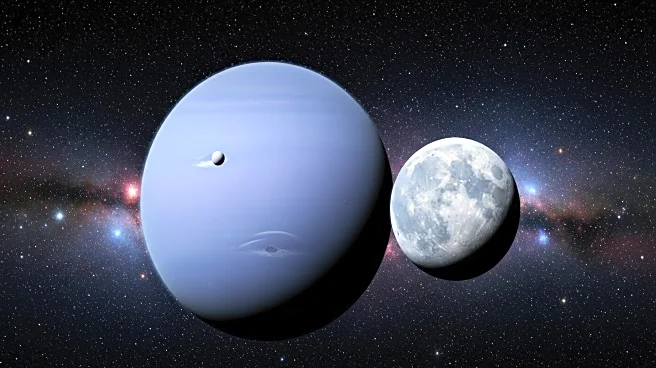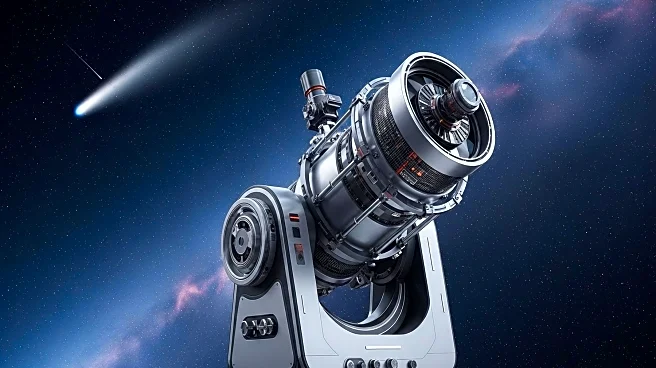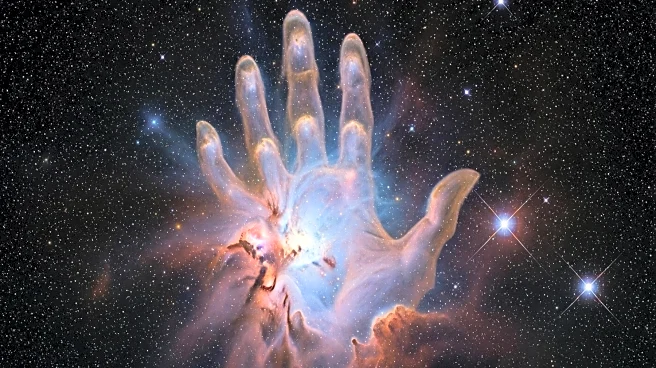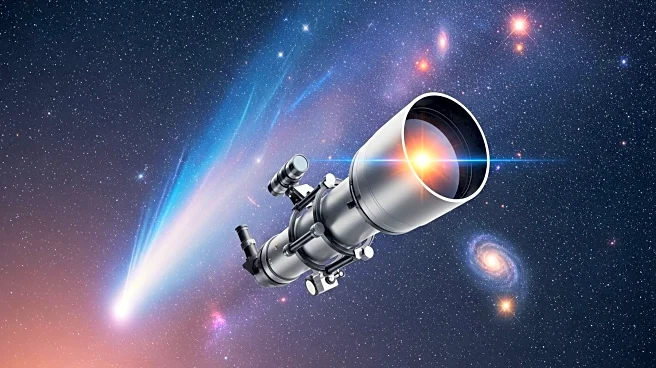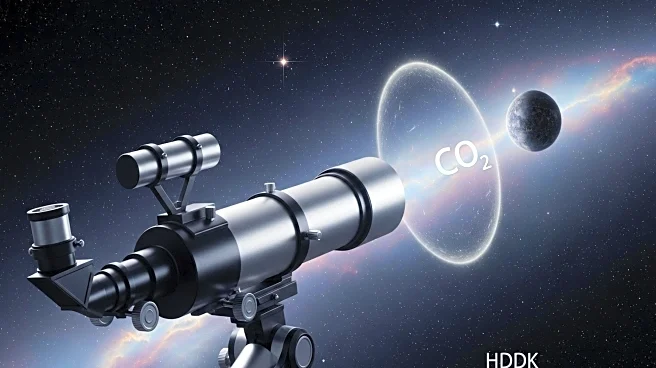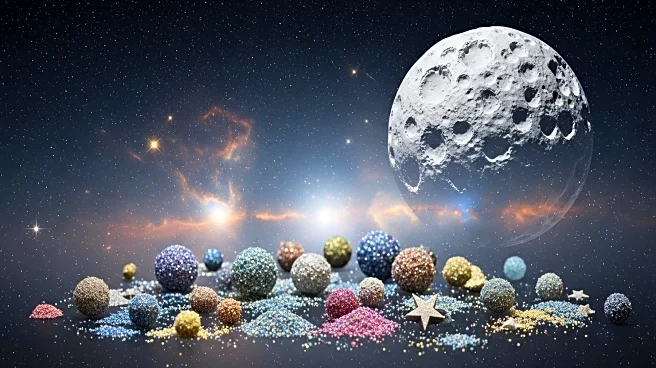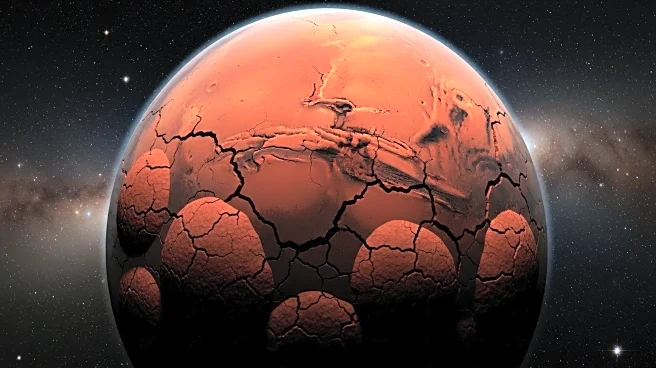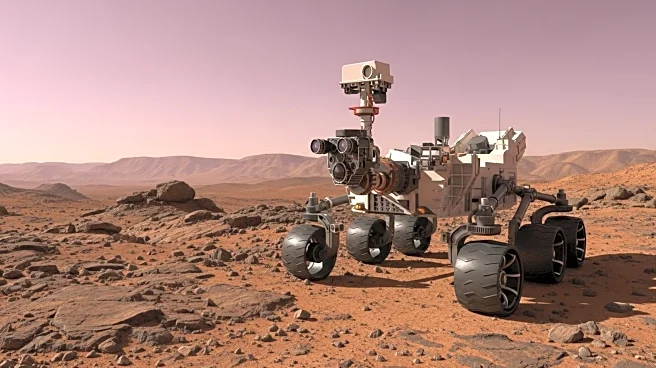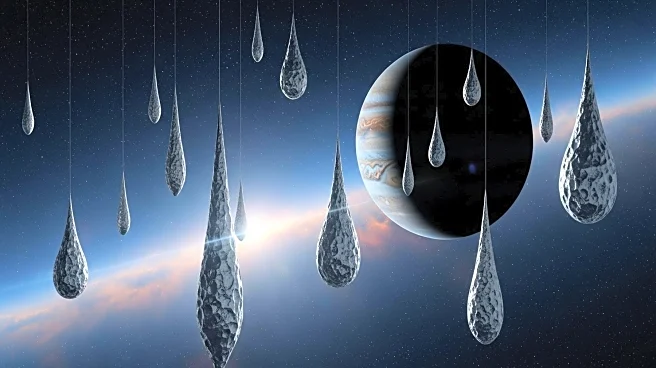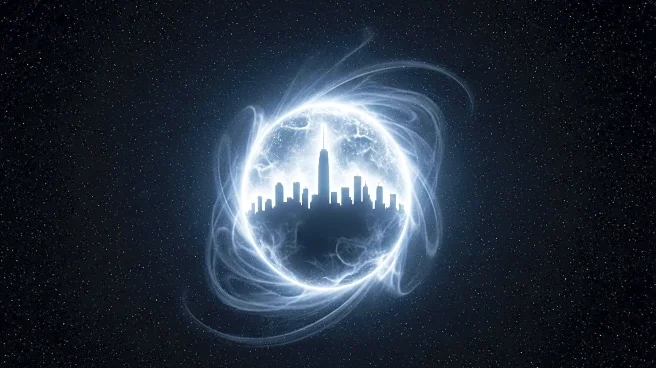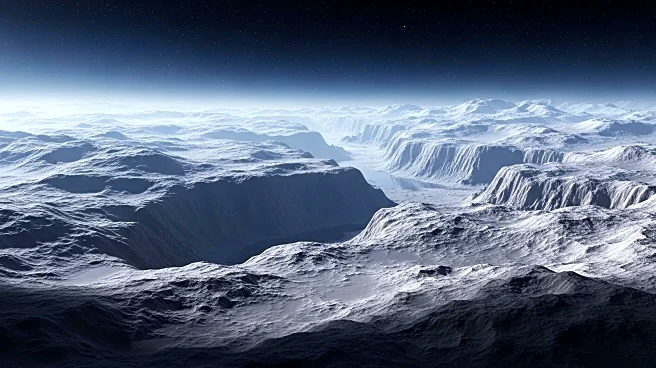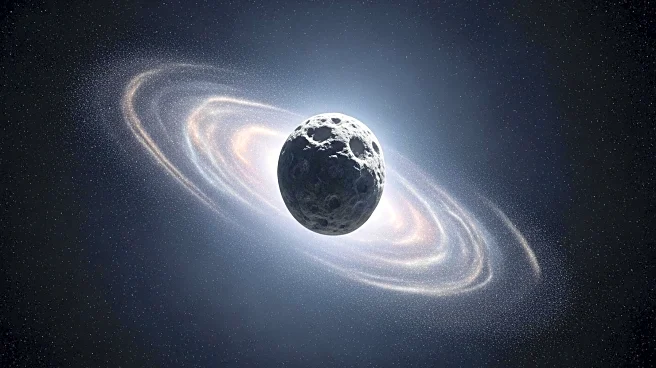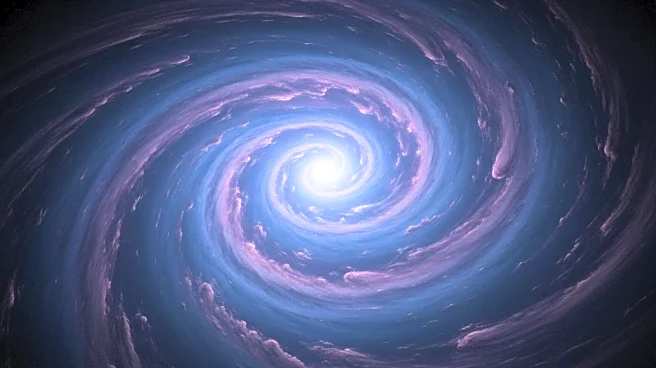What is the story about?
What's Happening?
NASA's Voyager 2 spacecraft captured its last image on August 28, 1989, before its cameras were permanently shut down to conserve power. The image features Neptune and its moon Triton, taken from a distance of over 4.7 billion kilometers from Earth. This marked the end of Voyager 2's planetary exploration phase and the beginning of its journey into the outer reaches of the Solar System. The image, showing Neptune on the left and Triton on the right, is significant for its eerie quality, as the sunlit sides of both celestial bodies faced away from the spacecraft. Voyager 2's mission has provided unprecedented close-up images and scientific data of the outer planets, reshaping our understanding of the Solar System.
Why It's Important?
Voyager 2's final image represents a pivotal moment in space exploration, highlighting the spacecraft's contributions to planetary science. The data collected during its 'grand tour' of the outer planets has been instrumental in advancing knowledge about Jupiter's Great Red Spot, Saturn's rings, Uranus's tilted axis, and Neptune's supersonic winds. The mission has expanded scientific understanding of planetary atmospheres, magnetic fields, and moons. As Voyager 2 transitions to studying the edge of the Solar System, it continues to provide valuable insights into charged particles, magnetic fields, and plasma, contributing to the study of interstellar space.
What's Next?
With its cameras shut down, Voyager 2 will focus on measuring the environment at the edge of the Solar System. Scientists will analyze data on charged particles, magnetic fields, and plasma to understand the transition from the Solar System to interstellar space. This research will enhance knowledge of the heliosphere and its interactions with the interstellar medium. Voyager 2's ongoing mission will continue to provide critical data for astrophysics and space science, contributing to the understanding of cosmic phenomena beyond the Solar System.
AI Generated Content
Do you find this article useful?
